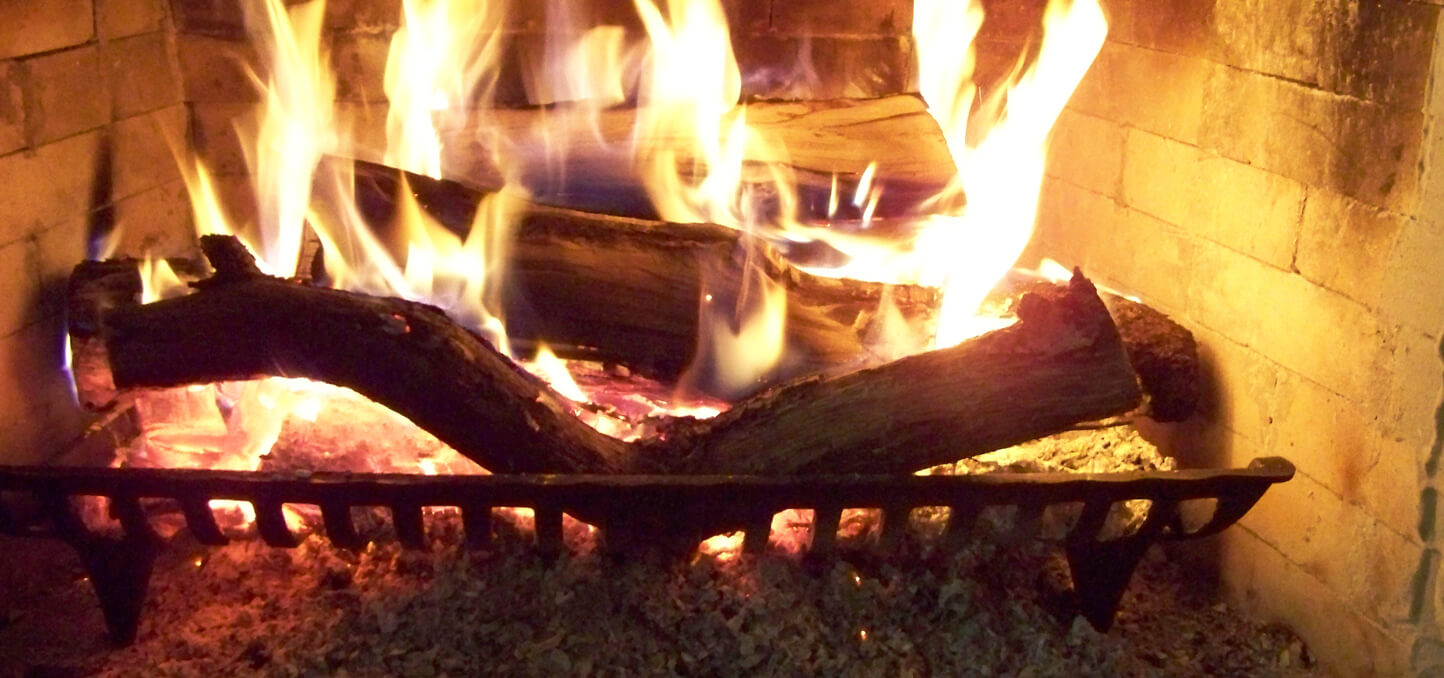The colder months bring times of holiday celebration and chilly nights. The glowing fireplace is a New England staple in most homes. The fireplace can go months with out a single thought of attention until the first chill hits the air. Here are 5 common issues to pay attention to before lighting a heart-warming fire.
Chimney too short: The height of the chimney has significant effects on your fireplace and how well it drafts. It can also help to reduce the risk of fire from hot embers and burning creosote in the event of a chimney fire. According to the 2012 IRC (International Residential Code) a chimney needs to extend 3 feet above the roof on the shortest side and must be 2 feet higher than any building structure within 10 feet.
Inadequate Clearances from Combustibles: Proper clearances are designed to prevent combustible materials from becoming over heated or being directly exposed to open flames. Combustible material can not be within 6” of the fireplace opening. There are also clearances that need to be followed for building material. Manufactures will have specific clearances for wood burning stoves and fireplace inserts.
Openings along the fireplace front: During the construction of many masonry fireplaces the face is built or applied after the firebox and the chimney are built. This can allow for openings between the face and firebox, smoke chamber or chimney. These gaps can expose hidden combustible to heat or allow these gaps to act as a secondary chimney. Openings need to be sealed to prevent a fire hazard.
Smoke roll out: Smoke staining on the face of the fireplace and mantle is an indication of inadequate drafting. A chimney that drafts properly will allow the smoke and exhaust gases to travel up through the flue and out of the home. Smoke roll out can be indication of blockage, improper construction or something as simple as the wrong size log grates. To ensure that the air is moving up the chimney it is important to try and get some warm air moving before you start your full roaring fire. Start by holding some lit paper under the open damper. Once the column of air in the flue as been warmed it will start to rise and create a proper draft to draw smoke up the chimney.
Undersized Hearth extensions: The hearth extension is designed to prevent logs from rolling out of the fireplace onto the floor where it can come in contact with combustible materials. The hearth extension in most cases should be a minimum of 16 inches. Larger fireplaces will require and even larger extension. This applies to fireplace inserts as well. It is common to add an insert into an existing masonry fireplace. If the insert extends beyond the face of the firebox then extending the hearth area or adding a non-combustible mat may be necessary.
It is important to have your chimney and fireplace cleaned and evaluated annually by a certified chimney sweep. If the fireplace is used on a regular basis, hazardous conditions can develop over time. Maintaining your fireplace can prevent possible concerns and allow for the warming glow to continue burning safely.
For more information please visit Chimney Safety Institute of America ( CSIA) or the National Fire Protection Association.

